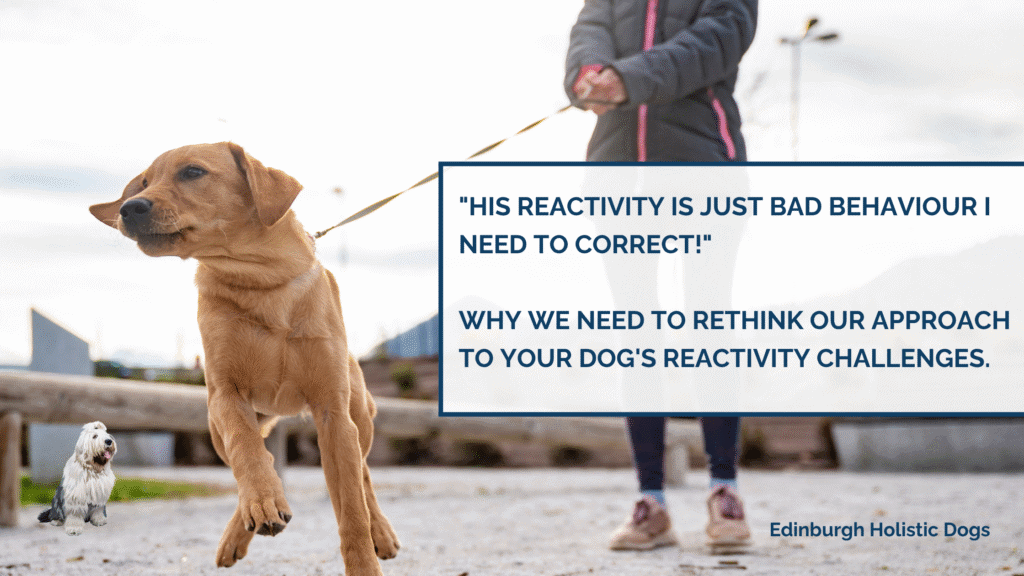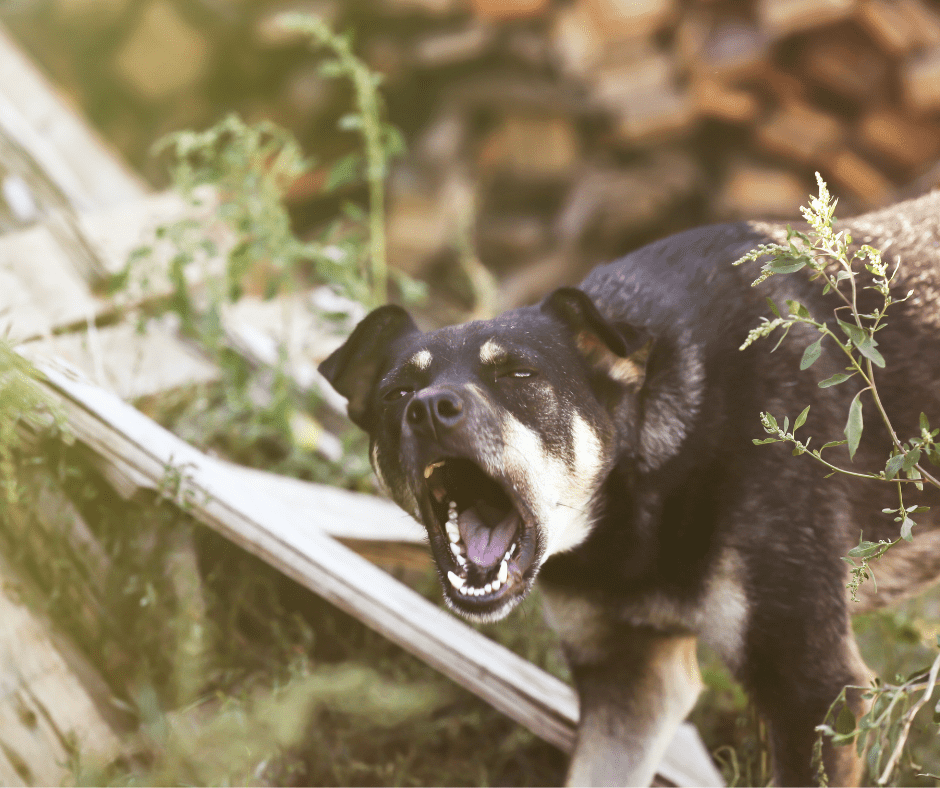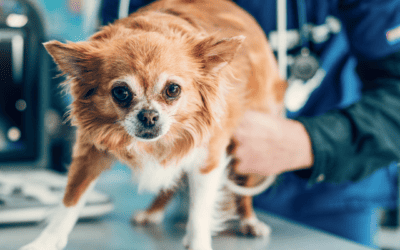As an Edinburgh dog behaviourist, one of the most common struggles I hear from owners is about their dog’s “reactivity.” This usually manifests as barking, lunging, pulling, and general agitation when their dog sees another dog, a person, a bike, or anything else that triggers them while on the lead. It’s frustrating, embarrassing, and often leaves owners feeling helpless.
The common narrative around reactivity is that it’s a “bad behaviour” that needs to be “corrected.” We’re told to yank the Lead, say “no,” or try to physically control our dogs. But what if I told you that this approach is fundamentally flawed? What if I told you that reactivity isn’t a behaviour to be corrected, but rather an emotional response?
Let’s unpack this with a deeper dive into the science.

Reactivity is Rooted in Emotion, Not Malice: The Scientific Basis of Behaviour
When your dog barks and lunges, they aren’t doing it to spite you, to be disobedient, or to be “dominant.” Instead, they are likely experiencing an intense, often overwhelming, emotion. Clinical behaviourists and researchers increasingly support this understanding.
- Fear and Anxiety are Primary Drivers: As highlighted by the Cornell University College of Veterinary Medicine, “A reactive dog is usually a fearful dog.” Their barking and lunging is a desperate attempt to create distance and make the perceived threat go away. PetMD, in an article on fear aggression, emphasizes that “Fear is a negative emotional response to a trigger. Essentially, fearful dogs want to create distance. When their message is ignored and distance is not created, they feel trapped and might escalate their behaviour.”1 This is a classic “fight or flight” response, where the dog is attempting to defend itself or escape a perceived danger.
- Frustration and Over-excitement: While fear is a significant factor, other emotions can also fuel reactivity. Dogs can become reactive out of frustration, particularly when they are prevented by a Lead from approaching or investigating something they are intensely interested in (American Kennel Club, “Understanding the Difference Between Reactivity and Aggression”). This inability to engage can lead to an outburst. Similarly, extreme over-excitement can tip into reactivity, where a dog’s arousal levels are so high that they lose impulse control. As veterinary behaviourist Dr. Karen Overall has extensively discussed, high states of arousal, whether positive or negative, can impair a dog’s ability to think and respond appropriately.
- Physiological Indicators of Emotional Arousal: Research increasingly looks beyond observable behaviours to understand canine emotions. A study published in PubMed Central PMC (“Dog–Owner Relationship, Owner Interpretations and Dog Personality Are Connected with the Emotional Reactivity of Dogs”) investigated dogs’ emotional responses using heart rate variability (HRV) and behavioural changes. It found that “both negative and positive incidents provoked signs of emotional arousal in dogs,” and that “owners detected the dog’s arousal especially during fear- and stress-evoking situations.” Decreased HRV is linked to increased sympathetic nervous system activity, indicating heightened physiological and emotional arousal, often in response to stress or fear. This provides physiological evidence that these are internal, emotional states.
- A Dog’s Natural Temperament Plays a Role: Research indicates that some dogs are inherently more sensitive to their surroundings. A study, published in PMC, specifically found that a dog’s “reactivity to stimuli” – how strongly they respond to sights, sounds, and movements – was closely linked to aggressive behaviour towards people (owners, children, strangers) and other dogs, across many different breeds. This tells us that a dog’s natural tendency to be highly responsive to their environment is a key factor in why they might act out reactively, highlighting that it’s often rooted in their emotional make-up from the start.
- Chronic Pain or Discomfort: It’s crucial not to overlook physical well-being. Underlying pain, discomfort, or medical conditions can significantly contribute to a dog’s reactivity. A dog experiencing chronic pain (e.g., from arthritis, hip dysplasia, dental issues, or even subtle neurological problems) may become more irritable, anxious, and less tolerant of interactions that might otherwise be neutral. They might lash out to avoid being touched, or because their general discomfort lowers their tolerance for environmental stressors. For this reason, a Functional Movement Assessment should be a part of your dog’s Behavioural assessment.
Why “Corrections” Don’t Work (and Often Make Things Worse)
When we try to “correct” an emotional response with punishment (Lead yanks, shouting, physical restraint), we often achieve the opposite of what we intend, and this is well-documented by ethical behaviour professionals:
- Suppression vs. Resolution: Punishment might suppress the outward behaviour, but it doesn’t address the underlying fear or anxiety. As the American Kennel Club notes, “Punishment worsens behaviour in most cases.” Your dog might stop barking to avoid the correction, but the internal distress remains, potentially intensifying and leading to more severe reactions in other contexts or even redirected aggression. Dr. Wailani Sung, a veterinary behaviourist, states on PetMD that “Using punitive techniques can increase fear and anxiety. Punitive techniques and tools have also been associated with an increased risk of aggressive behaviour directed toward you and other family members.”2
- Negative Associations and Damaged Trust: If your dog experiences a Lead correction every time another dog appears, they will start to associate the presence of other dogs with pain or discomfort, not just the correction itself. This creates a stronger negative association with the trigger, making future encounters even more stressful. The Animal Behaviour and Training Council (ABTC), a UK charity promoting humane practice, explicitly states that “ABTC Practitioners must use science-led, compassionate and non-punitive methods and equipment. Training and behaviour programmes must not be based on Positive Punishment or the creation of anxiety or fear.”3
- Inhibiting Communication: Dogs use body language and vocalisations (like growling or barking) to communicate their discomfort. Punishing these signals can teach a dog that it’s not safe to warn you, potentially leading to “silent” bites with less warning. As an article in Dogs Today Magazine points out, “People say but she’s wagging her tail, that doesn’t necessarily mean she likes it… Look out for body language ques. They can be so subtle, especially if they’ve been told off for showing fear in other forms first in the past.”4

So, What’s the Reactive Dog Solution?
Instead of viewing reactivity as a behaviour to be “fixed,” we need to approach it with empathy and a desire to help our dogs feel safe and comfortable in the world. This means:
- Identify the Underlying Emotion: Observe your dog closely, paying attention to subtle body language cues, such as lip licking, yawning, stiffening, or averted gazes, as discussed by many behaviourists. Understanding the emotion is crucial for addressing it.
- Manage the Environment (Threshold Management): This is paramount. The goal is to prevent your dog from being pushed “over threshold” – the point at which their emotional arousal is too high to learn or respond rationally. As Patricia McConnell, a certified applied animal behaviourist, discusses on her “The Other End of the Lead” blog, it’s about finding the “lowest intensity of the trigger stimulus that elicits the lowest intensity of the ‘reactivity.'” This means creating enough distance from triggers so your dog remains calm.
- Change the Emotional Association (Counter-Conditioning & Desensitisation): This is the cornerstone of effective reactivity training. When a trigger appears at a safe distance (where your dog is not reacting), immediately offer high-value treats or engage in a fun game. This is called classical counter-conditioning, which involves pairing something your dog fears or is anxious about with something they love, thereby changing their emotional response from negative to positive.
- Teach Coping Mechanisms (Positive Reinforcement Training): Instead of reacting, what do you want your dog to do? Look at you? Sit calmly? Walk on a loose lead? Teach these behaviours using positive reinforcement. When your dog offers a calm alternative to reacting, reward them generously. This is about building confidence and providing your dog with alternative, desirable ways to respond.
- Seek Professional, Force-Free Guidance: Reactivity can be complex, and a qualified force-free behaviourist or certified professional dog trainer can provide a tailored plan, teach you crucial observation skills, and guide you through the process effectively and safely. In some cases, veterinary behaviourists may also recommend medication, like fluoxetine (Reconcile), to help lower a dog’s baseline anxiety and allow them to be more receptive to training, as discussed on The Bark Blog, emphasising it works best “when paired with training and a solid behavioural plan.”
Remember: Reactivity is not a sign of a “bad” dog, but often a struggling dog. By shifting our perspective from correction to compassion and understanding that we are addressing an emotional state rather than a willful act, we can truly help our dogs navigate the world with greater confidence and calm. It’s a journey, but one that is incredibly rewarding for both you and your beloved companion.
If you are struggling with your dogs reactive behaviour, please reach out to me by emailing contact@edinburghholisticdogs.co.uk I work in person in Edinburgh and surround areas and virtually for the rest of the world.
My Bespoke 1-2-1 Reactive Dog Programme
My individualised 1-2-1 programmes begin with a comprehensive assessment of your dog’s overall well-being and daily life. This in-depth review covers key areas such as their diet, toileting habits, sleep patterns, and daily activities. By meticulously examining these aspects, I identify potential areas for improvement or factors that may require further investigation, all of which can significantly influence behaviour.
A crucial component of my assessment is a Functional Movement Assessment. This involves observing how your dog utilises their body during routine activities, allowing me to identify any suspected areas of chronic pain or discomfort. These findings are then clearly documented for your veterinarian to review and investigate further.
Throughout your programme, you will receive continuous support, including direct WhatsApp access to me for any questions or guidance. I also offer vet liaison and support for appointments, helping to minimise your stress and ensure a collaborative approach to your dog’s care.
Or sign up for my Reactive Dog Email, I pop into your inbox every two weeks with tips, tricks, info and stories all aimed to support reactive dog owners – CLICK HERE.
References
- Sung, W. (2023). Fear Aggression in Dogs. [online] www.petmd.com. Available at: https://www.petmd.com/dog/behavior/fear-aggression-dogs.
- ABTC. (n.d.). ABTC – Animal Behaviour & Training Council. [online] Available at: https://abtc.org.uk/.
- Today, D. (2019). The emotional toll of a reactive dog. [online] Dogs Today Magazine. Available at: https://dogstodaymagazine.co.uk/2019/02/19/the-emotional-toll-of-reactive-dog/.
- aercmn (2021). Reactivity in Dogs | Part I: The Myth of the Good Dog. [online] Animal Emergency & Referral Center of Minnesota. Available at: https://aercmn.com/reactivity-in-dogs-part-i-the-myth-of-the-good-dog/ [Accessed 19 Jun. 2025].
- Somppi, Sanni & Törnqvist, Heini & Koskela, Aija & Vehkaoja, Antti & Tiira, Katriina & Väätäjä, Heli & Surakka, Veikko & Vainio, Outi & Kujala, Miiamaaria. (2022). Dog–Owner Relationship, Owner Interpretations and Dog Personality Are Connected with the Emotional Reactivity of Dogs. Animals. 12. 1338. 10.3390/ani12111338.
- Pohlman, M. and Pohlman, M. (2017). What is Aggression? Reactivity vs. Aggression. [online] Available at: https://www.akcreunite.org/reactivityoraggression/ [Accessed 19 Jun. 2025].





